From the moment someone receives the confirmation that they have been selected as an Assembly Member, to the end of the Assembly, and the follow-up afterwards, they should have the best possible experience and feel welcome throughout.
How to onboard Assembly Members?
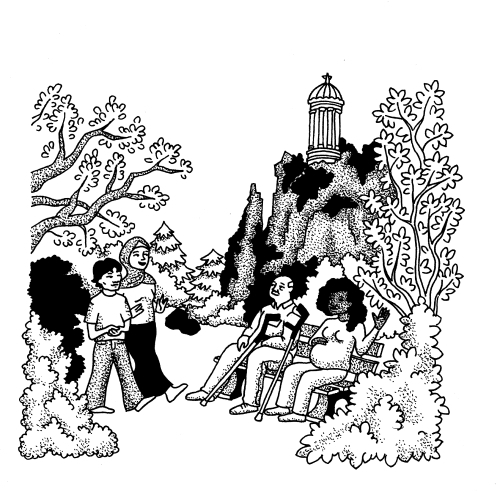
Once they are selected, call Assembly Members to confirm their attendance, give them a chance to clarify any remaining questions, and keep them continuously in the loop about next steps.
Before they come together in person, send Assembly Members further information about the question the Assembly will tackle, the information kit to read, the agenda of the Assembly meetings, and any logistical information.
Invite Assembly Members to join a virtual platform where they can learn more about the issue and connect with others.
Organise a time for Members to meet one another virtually or in person before the Assembly starts to welcome the group. Group-building helps create cohesion amongst the Members and research shows that it helps people to engage better with complexity.
What should Members know about interactions with the press?
Assembly Members, especially those taking part in national level Assemblies, might be approached by journalists or lobbyists. They should be briefed on what to do if this happens: what can and can not be discussed while the Assembly is still ongoing, and what kinds of interactions should be reported to Assembly project team.
When speaking to journalists, Assembly Members should:
- Refrain from predicting any outcomes or speak on behalf of the Assembly
- Be encouraged to speak about their experience and hopes
What helps Members feel welcome when they come together?
For national or regional level Assemblies, where Members come from different parts of the country or region, accommodation is provided. Host them all together in the same hotel, where they can exchange and learn about each other during evening social activities or breaks, to help facilitate social interactions amongst the group.
What social activities can help Members build trust?
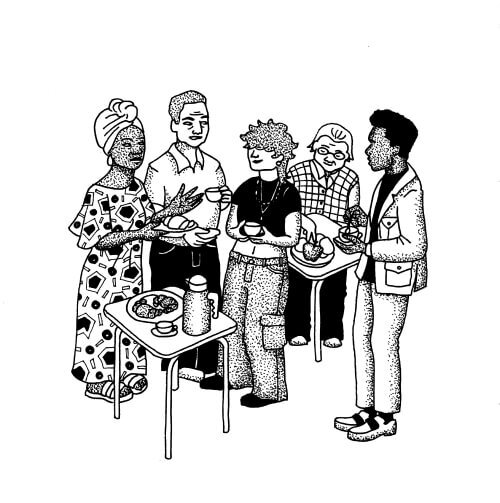
Social activities help Members get to know each other and foster feelings of trust and respect. This will also help them feel comfortable during deliberation and work more effectively together. Organise shared meals, active breaks where Members can meditate, take a walk, or exercise together.
How to help Members feel comfortable in the presence of observers?
Citizens’ Assemblies often have researchers, observers, and journalists present for plenary discussions. This can be intimidating for Assembly Members. It is good practice to give Members a chance to meet the observers and hear why they are in the room at the outset of the process.
Facilitation
Once the Assembly starts, facilitators with expertise in citizen deliberation take Members through the process of learning, deliberation, and finding common ground to develop recommendations. They follow the facilitation plan that has been developed in advance. For further details about the plan, please refer to the Designing the Assembly section of this guide.
Facilitators:
- Are neutral regarding the issue Members are tackling.
- Help make sure all Members have equal chances to speak so that different views and lived experiences are heard.
- Help ensure that any judgements made are based on evidence and careful deliberation.
- Support respectful interactions amongst the group.
New digital tools, like the MIT LVN Platform, can help facilitators capture emerging threads in small group discussions and share people’s stories beyond the room.
How does the Assembly unfold in the room?
Welcome and introduction
At the start of the Assembly, a person with the most authority from the commissioning organisation (the president, minister, city council leader, chief executive, or similar) welcomes Assembly Members, emphasises the commitment to implement recommendations the Assembly will come up with, and explains the task and the ask.
The facilitators introduce the agenda of the day and start with an ice-breaker designed for Assembly Members to get to know each other.
Identifying shared values
Members decide together on a broadly shared criteria for considering solutions and reaching decisions - what values guide their decisions. They should also decide on a list of rules about how they will work with each other. It is helpful to go back to these in case of disagreements later in the process. This is also Members’ first experience of taking a group decision – one that is not directly related to the issue the Assembly will tackle, so it’s an opportunity to ease into working together.
Learning
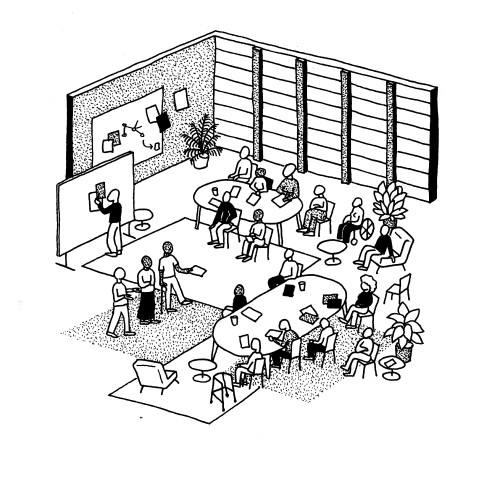
Becoming familiar with the evidence and information about the issue enables Members to slowly build up informed judgement, provides a basis to generate ideas, and develop recommendations. Assembly Members must have enough time and opportunity to question and make sense of the information presented to them, and to critically evaluate it. Techniques like splitting up the information, going through it in groups and reporting back to other Members or questioning experts can allow Members to better absorb it. Members should be asked if they feel there are any gaps in the information and hear from additional speakers to fill in those gaps.
Assembly Members follow the steps of:
- Discussing the information kit
- Hearing from stakeholders and experts
- Developing understanding of the problem and identifying challenges that need addressing
- Identifying any information gaps and requesting additional information and speakers
Deliberation and consensus building

During the deliberation stage, Members generate ideas, listen to the views of others, weigh trade-offs of potential choices, and consider consequences. This is where the diversity of lived experiences comes into play and allows collective intelligence to emerge. Members discuss the relevant information and consider different options, with an explicit aim of finding common ground and reaching group decisions.
Innovative practices
Incorporating creative ways to build skills useful for deliberation and open up the imagination of what is possible for Members can contribute to the overall experience and quality of the Assembly. Innovative practices can be:
Running a Democracy Fitness Training
Developing collective imagining of alternative futures
Practising thinking from the perspective of future generations or the natural world (this can be done by assigning some Assembly Members as representatives of these groups)
Working with creative practitioners - poets, actors, dancers
Extending deliberation
Additional time is always appreciated in any Assembly, but if Members feel that there is a strong need to extend the process for another session or a day to allow them to finish their work, such a possibility should be created.
Collective drafting
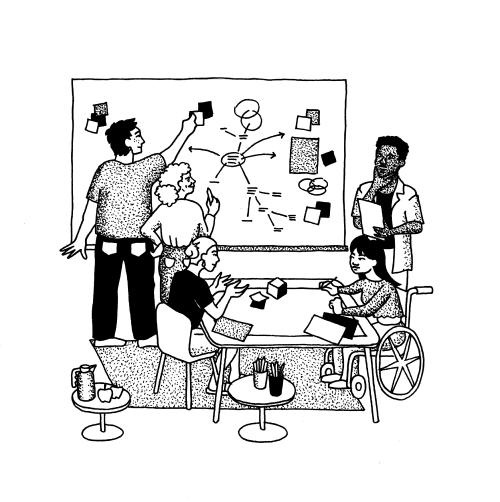
Assembly Members work together to draft recommendations in an iterative way, returning to them in smaller groups to flesh them out. Several revisions will be needed to come to the final iteration.
All of the recommendations are reviewed collectively to get a sense of remaining disagreements and possible adjustments that can be made.
A useful practice is to share the draft recommendations with the commissioner and relevant stakeholders, to ask for feedback on their clarity, and give them the chance to pose clarifying questions. This improves the quality of the final report and the likelihood of impact.
In most cases, Members write the final recommendations in their own words. In all circumstances, Members should always have a final say over the wording of Assembly recommendations.
Taking a group decision
Once the list of recommendations is complete, Members vote on each recommendation to decide whether it will be included in the final report. 75-80% support is needed for it to make the cut. It’s not about a recommendation being perfect, but whether Members agree on the intent behind them. A simple voting process can be used by raising hands.
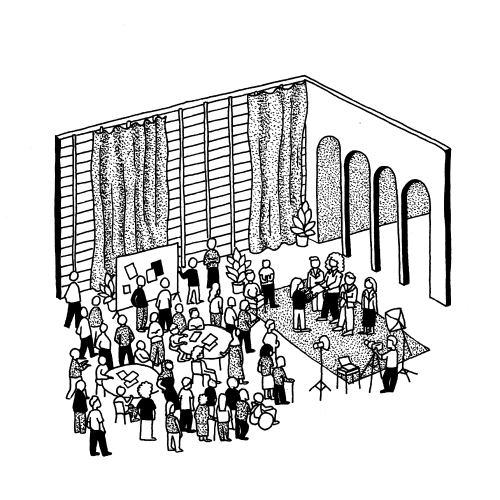
Handover to the commissioning authority
Members present the final Assembly report in person to the commissioning authority. Its representatives should acknowledge the work done by Members, ask any clarifying questions and present the timeline for what happens next. In some cases, this event is open to stakeholders or the broader public.
Acknowledgement of participation
Commissioners can present Members with certificates or some other form of acknowledgement recognising their Assembly Member status and commitment to the process, and to thank them for their hard work.
Sharing publicly
The commissioning authority should make the final report publicly available on their website, issue a press release about it or ideally organise a press conference.

